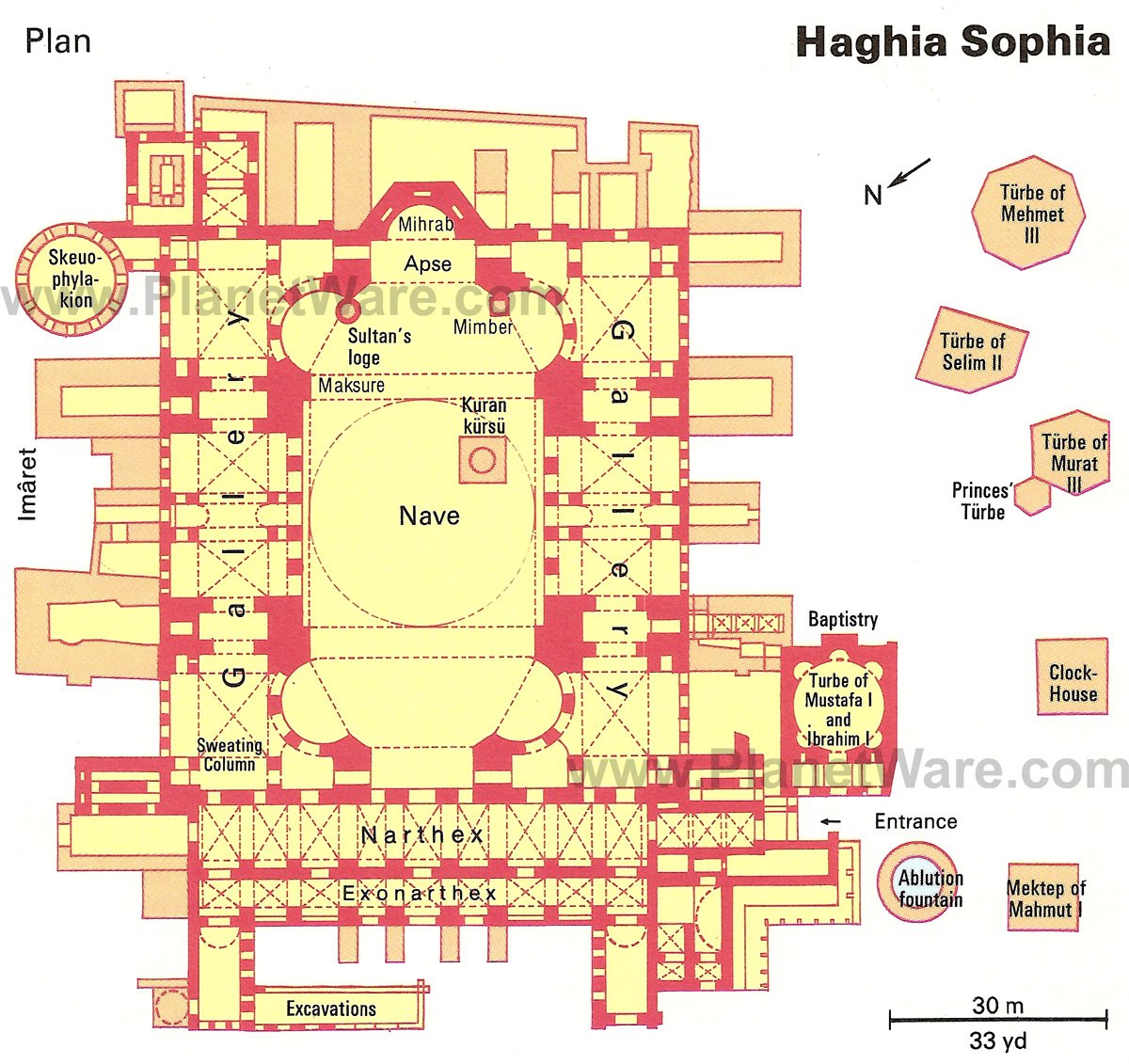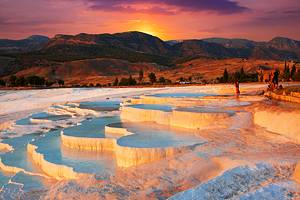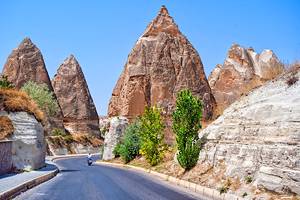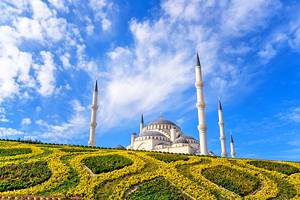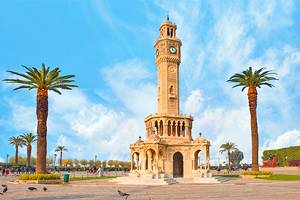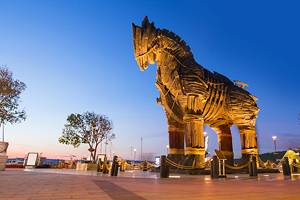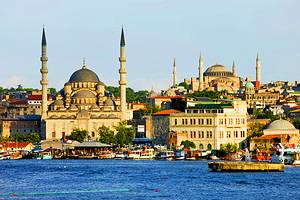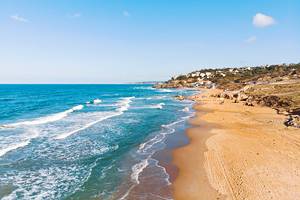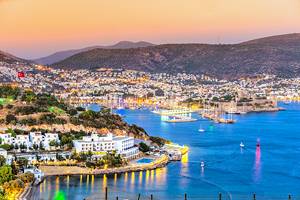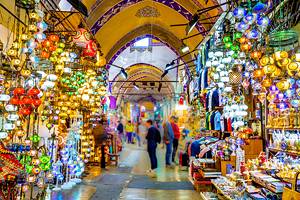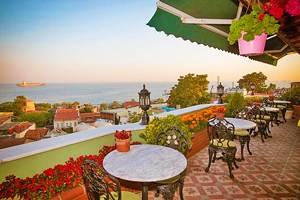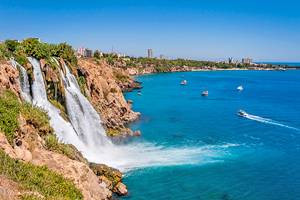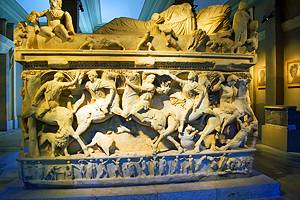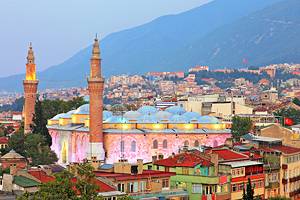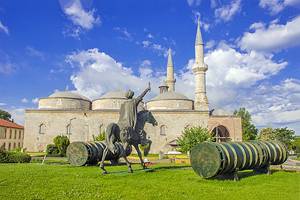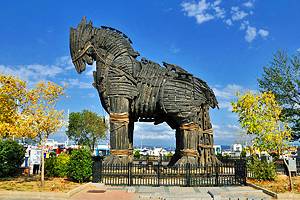Exploring Hagia Sophia Mosque: A Visitor's Guide
The grand old Hagia Sophia (Aya Sofya in Turkish) has had a history as complex as Istanbul itself.
Starting its life as the Hagia Sophia Church (Church of Holy Wisdom), it was turned into a mosque after the Ottoman conquest and then, in 1935, Atatürk decreed it to become a museum. In 2020, this iconic monument's main use was changed, and it again reverted to becoming a working mosque with its new official title of the Hagia Sophia Holy Grand Mosque (Aya Sofya-i kebir Cami-i Şerifi).
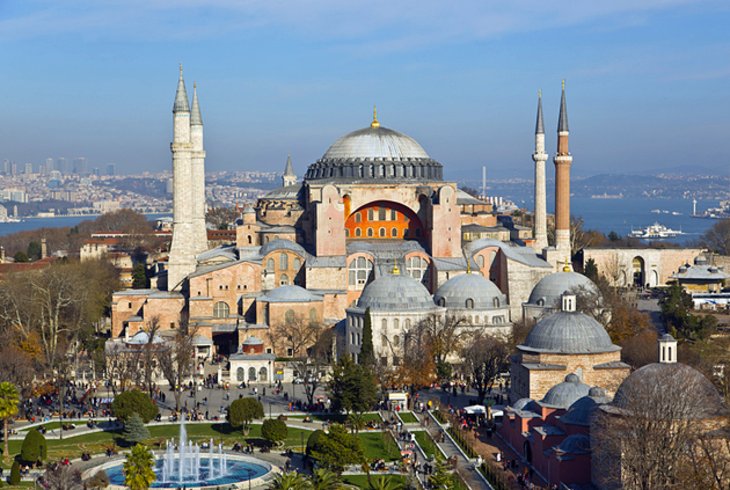
Its dome is one of the iconic symbols of the city, and even amid all of Sultanahmet's (Istanbul's old city district) many architectural highlights, this ancient building remains one of the top attractions for tourists.
On This Page:
Visiting Etiquette at Hagia Sophia
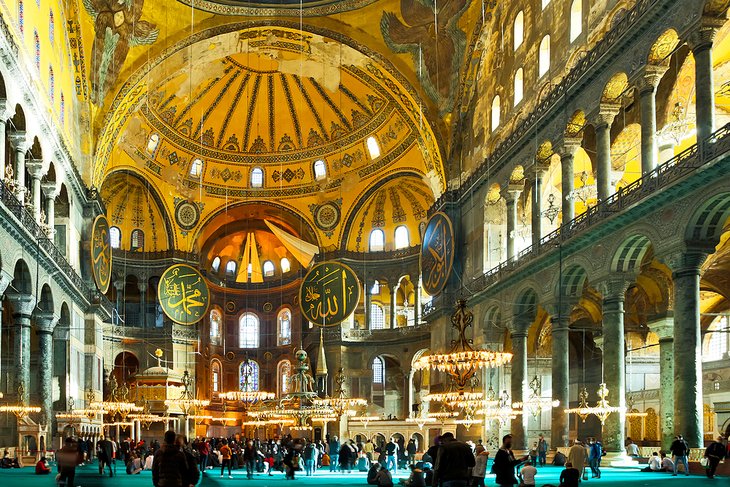
As the Hagia Sophia is now again a working mosque, there is no admission fee to enter, and non-Muslims can enter the building outside of prayer times.
Both male and female visitors need to be respectfully dressed (no shorts, short skirts, or shoulder-less tops) and women should don a headscarf before entering. Headscarves can be borrowed for free at the main entrance.
All visitors need to remove their footwear on entry.
Touring Hagia Sophia
There are official tour guides available at the Hagia Sophia's entrance courtyard, but if you're planning to hire guides at a few of Istanbul's top sights to delve deeper into the history of this city's grand monuments and buildings, it's usually better value to book a tour combining some of the major sights.
The small-group Istanbul day tour explores the old district of Sultanahmet and is great if you want to cram as much as possible into one full day in the city. It includes tours (and entrance fees) to six of the district's most famous places and buildings-the Hagia Sophia, Topkapi Palace, Basilica Cistern, Hippodrome, Blue Mosque, and Grand Bazaar-offering a great introduction to Istanbul's vast heritage. Lunch and pickup and drop-off from your hotel are also included.
The Imperial Istanbul half-day private tour takes things at a slightly slower pace, concentrating on touring the Hagia Sophia, Basilica Cistern and Grand Bazaar. It's a good option if you want to discover the history and stories of these three renowned sights. All entrance fees and pickup and drop-off from your hotel are also included.
History of Hagia Sophia
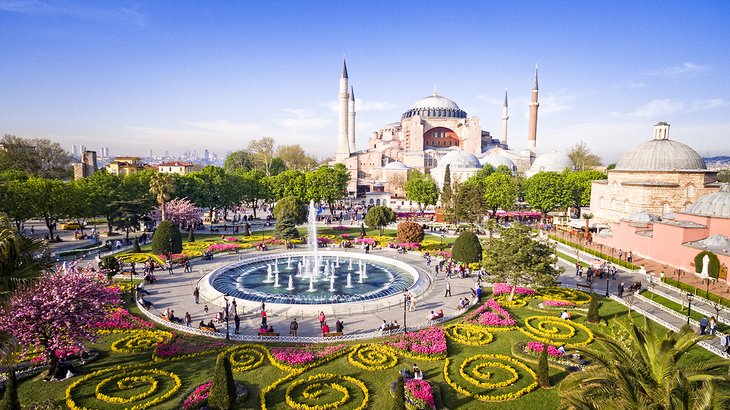
The first church on this site was built by Constantine the Great in AD 326 but this was later burnt down. The next church that rose on this spot was then destroyed during the Nika Insurrection.
During the reign of Emperor Justinian, the church was rebuilt on a grander scale, with construction taking place between AD 532 and 537.
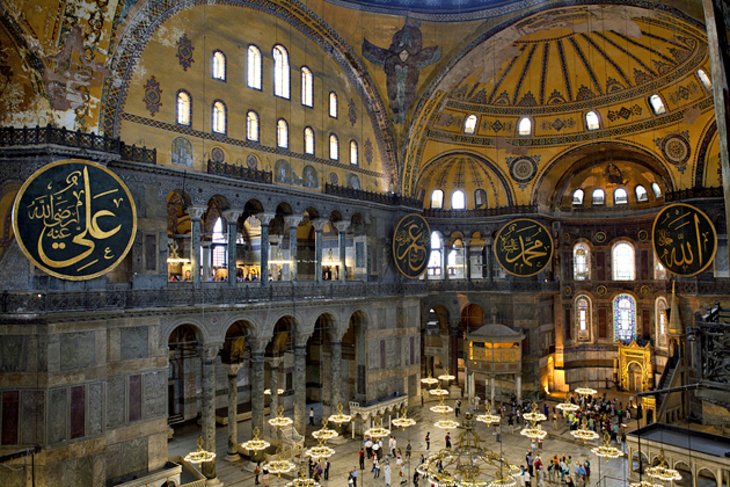
Built with the avowed intention of surpassing in splendor all the buildings of antiquity, its construction incorporated many classical elements, with Roman and Greek sites pillaged for their stones.
Large numbers of columns were brought to Constantinople from temples throughout Asia Minor, Greece, and Italy, and the finest marbles and noblest metals were used.
It is said that the total cost of the building was 360 hundredweight of gold and that 10,000 workmen were employed in its construction.
Layout & Mosaics of the Hagia Sophia
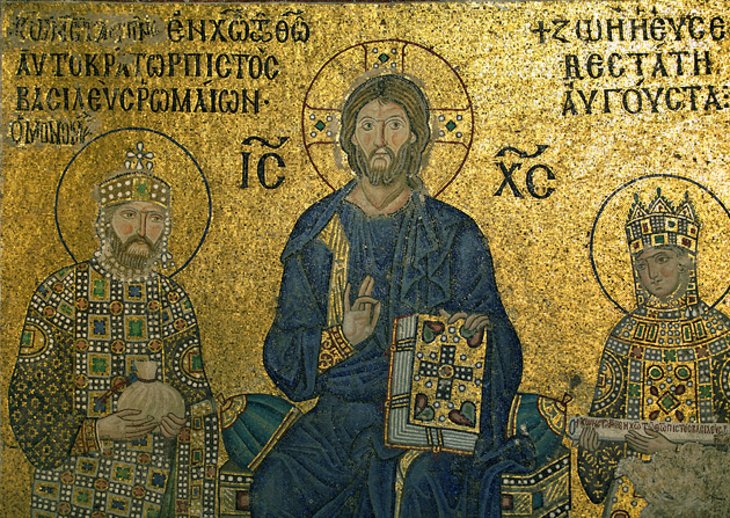
Measuring 75 meters long, 70 meters wide, and 58 meters high (from the floor to the top of the dome), the Hagia Sophia is a mammoth space.
In the exonarthex (outer vestibule) and narthex (inner vestibule) are fine early Christian mosaics. During the building's tenure as a working mosque, these were covered up under whitewash, but reconstruction work, which began in 1931, in preparation for the Hagia Sophia becoming a museum, has mostly exposed these beautiful artworks once more.
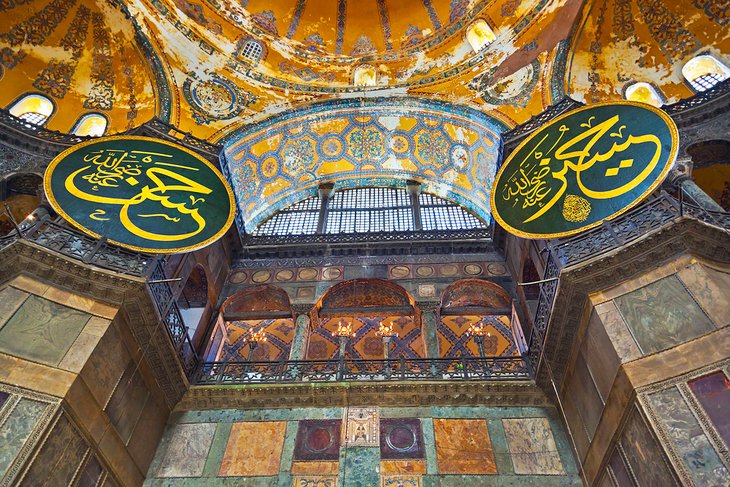
Of particular interest is the 9th-century figure of Christ as Pantocrator over the imperial doorway (the main entranceway) and the mosaic of Christ Enthroned flanked by Empress Zoe and Emperor Constantine in the upper gallery.
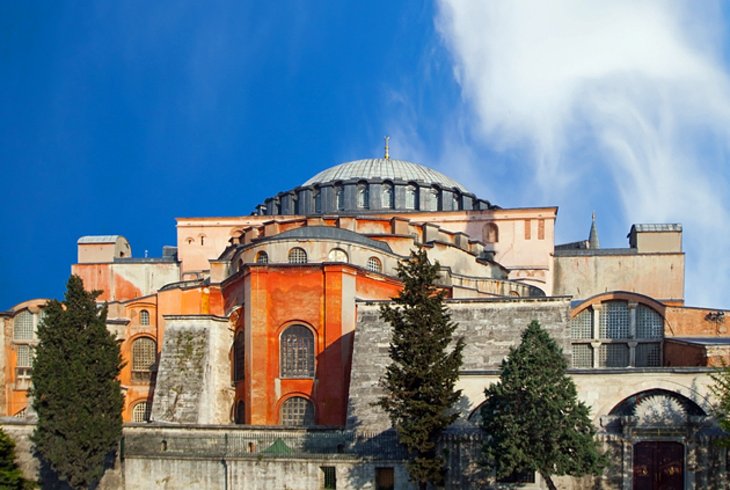
Because of its dual religious usage over the centuries, the interior is a fascinating mix of both Byzantine and Ottoman splendor. It is lit by countless windows and dominated by the magnificent central dome with its 32-meter diameter.
Huge circular wooden plaques on the main piers are inscribed in gold script with the names of the first four Caliphs.
In the apse is the mihrab (the niche indicating the direction of Mecca).
Hagia Sophia Highlights
Virgin Mary Mosaic
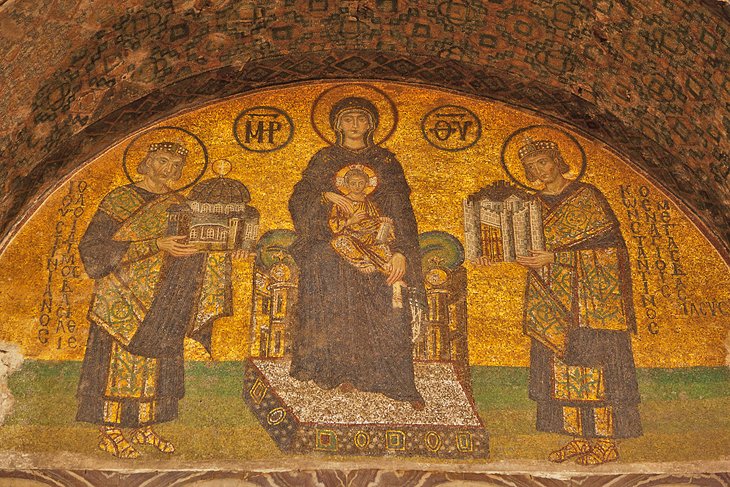
Above the main exit doorway, this stunning 11th-century mosaic depicts the Virgin Mary flanked by Byzantine Emperors Constantine the Great to her right and Justinian to her left. Constantine is offering the virgin Constantinople, while Justinian is offering the Hagia Sophia to her.
Omphalion
During the Hagia Sophia's 2020 conversion into a mosque, a carpet was laid across the floor of the nave, but the Omphalion has been kept uncovered.
This square section of inlaid mosaic flooring was where the Byzantine emperor's throne was placed as new emperors were crowned.
Weeping Column
One of the Hagia Sophia's most famous components is this column in the northern side aisle of the Imperial Door. The column is said to have been blessed by St. Gregory the Miracle Worker, and one of the popular things to do here is place a finger in the hole, as it is thought to cure sickness.
Ottoman Tombs
Five sultans are laid to rest in the Hagia Sophia complex, just outside the main exit from the building, beside the original baptistry. All of the tombs have lavish interiors featuring Iznik tile work.
Address: Aya Sofya Meydani, Sultanahmet
Official site: https://muze.gen.tr/muze-detay/ayasofya
More Related Articles on PlanetWare.com
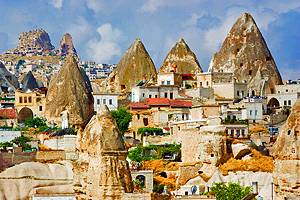
More Byzantine Sights: The Hagia Sophia is, justifiably, Turkey's most famous Byzantine relic, but the country is littered with castle and church remnants from this period. The most important area for Byzantine ruins outside of Istanbul is Cappadocia. Come here for the valleys filled with cave-cut churches, which hold vivid frescoes.
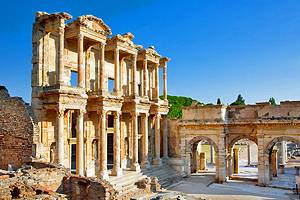
Earlier Ruins: If your mind is boggling from the vast history on display from the Byzantine period, then wait until you travel down the coast. Here, you'll find some of Turkey's most well-known historic sights, including the famous ruins of Troy, with settlement stretching back 5,000 years, and the iconic ruins of Ephesus, Turkey's best-preserved Roman town.
